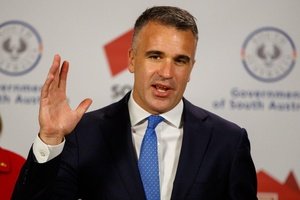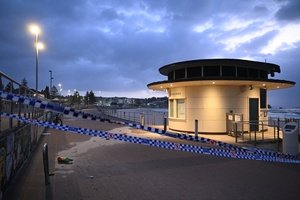This is according to Edward Schuller, Queensland state secretary of Teachers’ Professional Association of Australia (TPAA) – an industrial association under the Red Union banner that seeks to offer teachers an ‘alternate voice’ to that of the AEU.
“The motive is understandable to a degree, but we think that it’s being driven by an ideological, ideal world, ‘everyone’s the same, everyone’s got the same ability’ [view on education].
“But practically, that’s just not working, and everyone’s coming off worse because of it,” Schuller tells EducationHQ, of current school inclusion policies.
According to Schuller, bureaucrats within state education departments who are driving such policies are “so far removed from the consequences of those decisions” that they fail to see the true impact they’re having on the ground in classrooms.
“They’re just completely out of touch with what the teachers are having to deal with,” he argues.
“The big thing is the fact that children who are being included, students with disabilities and special needs, aren’t getting the support that they need in mainstream education.
“It’s also having a flow on effect to the other 20 to 25 students in the class, because the teacher isn’t fully equipped to deal with the student with special ed, and in a sense what’s coming from that is both are getting the worst of both worlds,” Schuller warns.
TPAA’s own members’ poll found 85 per cent of teachers do not support the inclusion policy for mainstream schools.
Some 97 per cent said a student with disability had impacted other students in class, while 94 per cent reported inclusion had significantly increased their workload.
“Teachers are copping the rough end of the stick … because they’re sort of having to balance priorities between individual student support plans, all of this sort of thing, in classes for those students, whilst also trying to give attention to 20 to 25 other students. It’s poorly resourced,” Schuller says.
Support within schools was also found to be sorely lacking, the poll found.
“One of the shocking things is that only 48 per cent of the respondents said that they received support from school leadership on dealing with [inclusion problems].
“So, pretty much less than half said that they received support for it – that’s pretty alarming," Schuller says.
He wants to know why government funding for special needs support isn’t reaching the classroom.
“Education is higher funded than it ever has been, and it’s functioning terribly. That’s not to say that we need more and more money thrown into it blindly, because that’s making it worse … it’s digging the holes deeper,” he contends.
At the core of TPAA’s broader campaign is the call for the centralised and ‘bloated bureaucracy’ running school systems to be dismantled.
The idea is to have schools operate at the local level, Schuller explains, so that individual school leaders are held accountable to their own community.
“As opposed to reporting back to a capital city bureaucrat, basically, because people make better decisions when they are accountable, because they’re actually thinking about people that it affects,” he adds.
Having a ‘centralised power’ in control of schools doesn’t benefit the teaching workforce or students either, he says.
“There’s really not a lot of room for nuance, or thought for when it comes to how decisions will impact individual schools and communities.
“So that’s one of the common things that we found, is that these Department of Education bureaucrats, many of which are registered teachers, would be much better suited to be back in the classroom – on the front line and teaching – as opposed to sort of finding excuses to keep themselves employed on higher paying [department] administration roles.”
While some experts have warned that leaving too much power in the hands of individual school leaders without centralised guidance and supports can create a ‘learning lottery’ where best practice is left to chance, Schuller sees it quite differently.
“All of the principal (TPAA) members … have said this format, where schools are locally accountable, will make good schools better, and it may make bad schools a bit more accountable.”
TPAA takes the view that until we admit that different students require different educational settings, the quality of our schooling will continue to decline.
Yet one recommendation to come out of the Royal Commission into Violence, Abuse, Neglect and Exploitation of People with Disability was that special schools be phased by out by the end of 2051, with two commissioners writing that segregated education was incompatible with an inclusive one.
However, others recommended something different: that new special schools be located near existing mainstream schools, allowing partnerships to provide regular contact between both student cohorts.
Last week federal NDIS minister Bill Shorten indicated that scrapping special schools was not a feasible idea.
“I don’t necessarily accept that everyone in special schools is doing it bad,” he told the National Press Club in Canberra.
“If you were just to take everyone at a special school now and take them to their local high school or primary school, you’re just kidding yourself. It’s not going to happen.
“Some of the debate and some of the rhetoric, does underestimate the contribution of kids, but also their parents, to special needs ed and the teachers who work in those systems.”
The Federal Government has offloaded any decision on phasing out special schools to the states and territories, none of which have made a commitment on it.
Schuller, for one, would like to see special schools properly funded and decision-making power stripped from education departments.
“Basically, the system as it stands isn’t working, and one of the reasons it’s not working is because of the teacher shortage crisis, which is being brought on by such a workload burden,” he says.
“And we believe, and our members have told us, that it’s these department of education policies, whether it’s on inclusion, whether it’s on student support plans, whatever it might be, that is driving the workload burden to an incredible high.”














